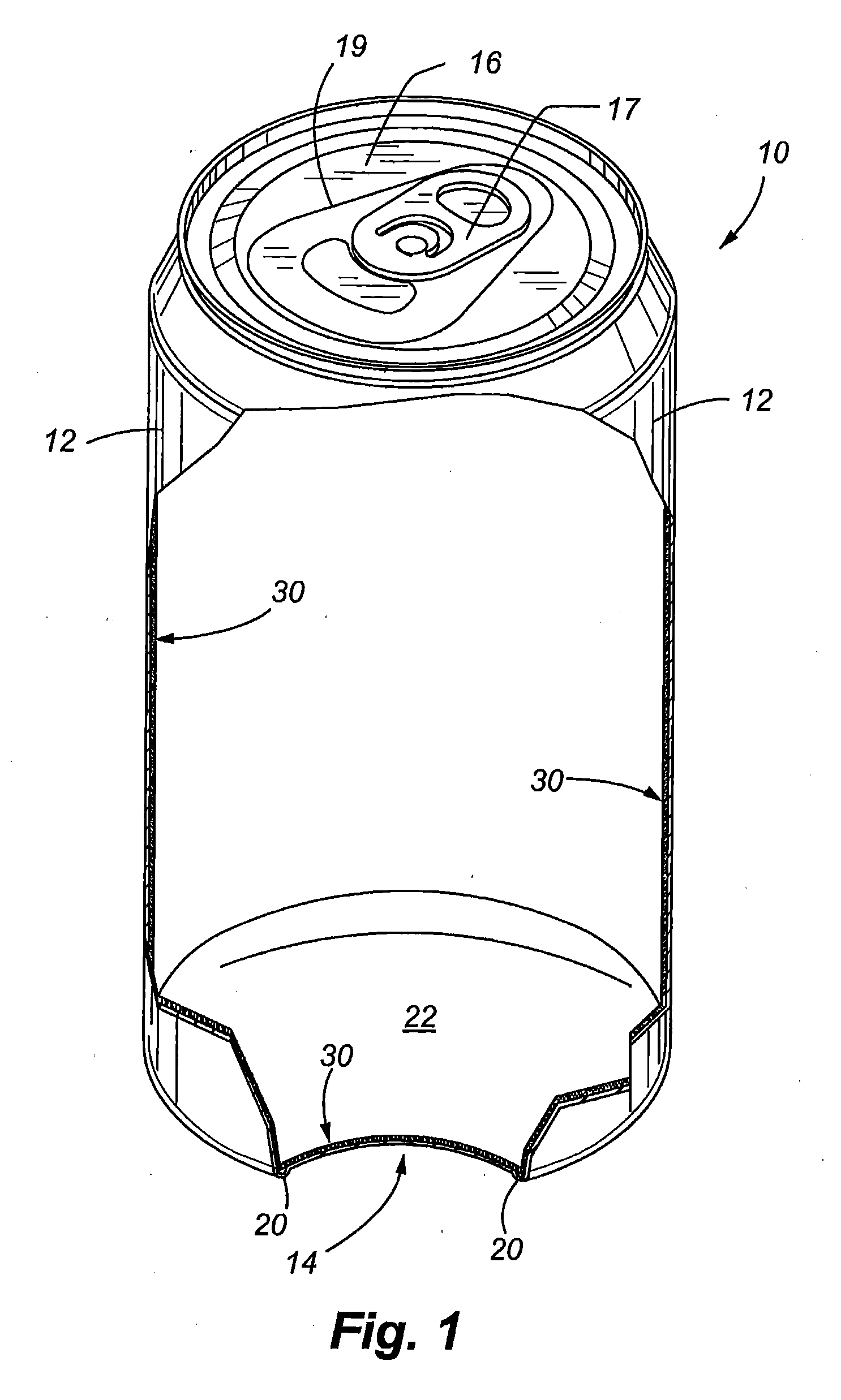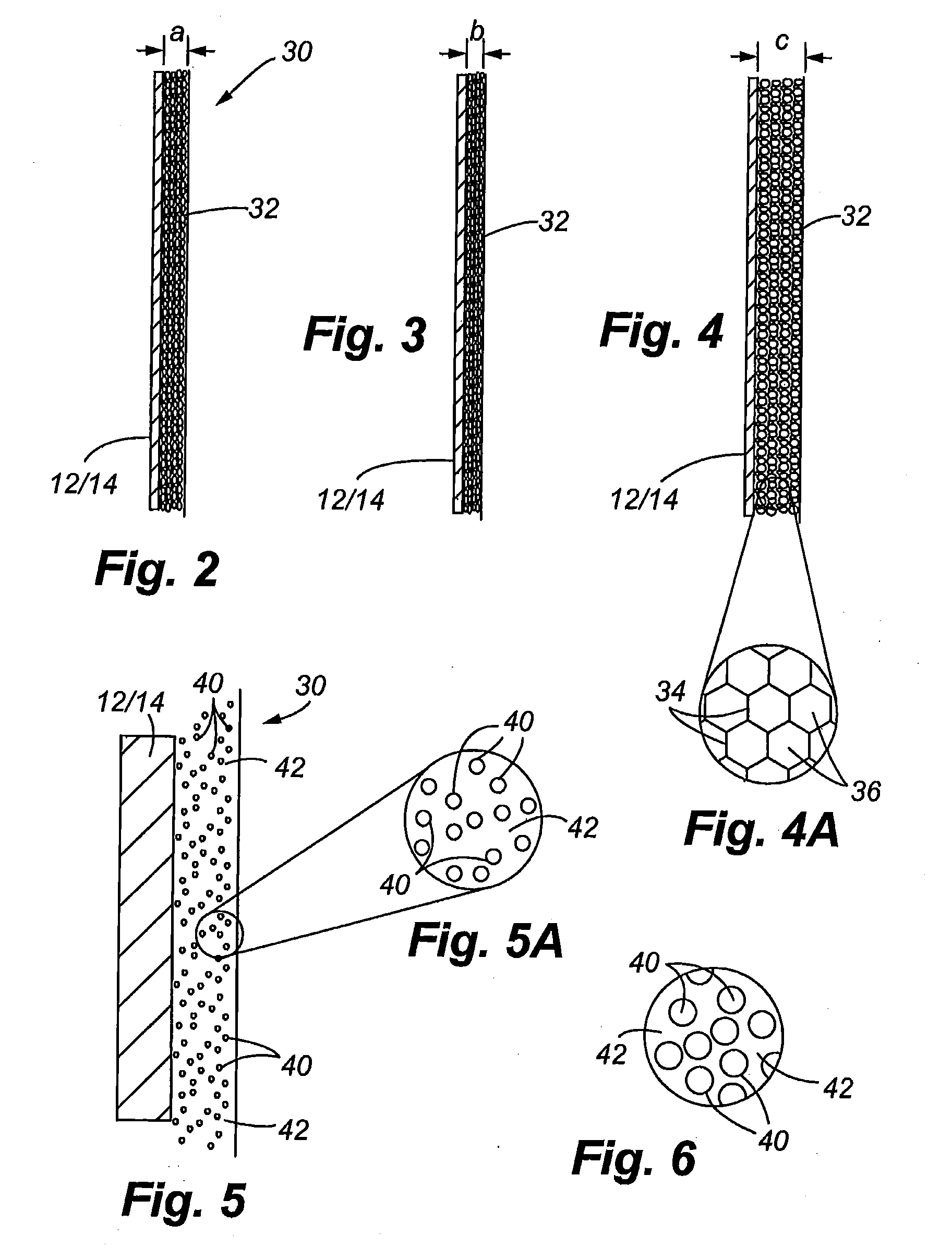Thermal barrier liner for containers
a container and barrier technology, applied in the field of containers with thermal barrier lines, can solve the problems of traditional methods of insulating beverages, unfit consumption, and the bottom of containers being exposed, so as to achieve the effect of effective and safe keeping beverages at the desired temperature during consumption
- Summary
- Abstract
- Description
- Claims
- Application Information
AI Technical Summary
Benefits of technology
Problems solved by technology
Method used
Image
Examples
first embodiment
[0050]An added benefit with respect to first embodiment is that when the container is being chilled (when unopened) fast chilling of the beverage may take place since the thermal barrier liner is in its more compressed or thin state, thereby allowing rapid heat transfer away from the container without having to overcome a relatively thickened insulating member.
[0051]The permeability of the thermal barrier liner is such that gas is allowed to permeate through the cell walls over a period when under pressure to reach equilibrium, for example, a few hours, but the cell walls are not so permeable that immediate deflation takes place when ambient pressure is reduced. Therefore, the thermal barrier liner will maintain a full thickness for at least a period of time in which a consumer would normally consume the beverage. It is contemplated that it may take up to twenty-four hours for pressurized gas within the container when the container is sealed to permeate through the thermal barrier l...
third embodiment
[0061]FIGS. 7 and 7A specifically illustrate this third embodiment wherein the container is under pressure and assumedly at a chilled temperature (for example below 6° C.). FIG. 8 shows the container when removed from refrigeration and warmed to a temperature wherein the solid phase change material has transitioned from a solid to liquid state. More specifically, the materials in the microcapsules 50 are shown in FIGS. 7 and 8 as transitioning from a solid state 51 to a liquid state 52.
[0062]FIGS. 9, 9A and 10 illustrate yet another preferred embodiment of the present invention. In this embodiment, the thermal barrier liner 30 comprises multiple layers 60 of a lining material wherein voids or gaps 62 exist between each of the layers. The voids or gaps between the layers may be provided in an irregular pattern. Thus, the layers do not lie evenly over one another and the layers extend non-linearly having continuous patterns of bends or curves in the liner material that form the voids ...
PUM
| Property | Measurement | Unit |
|---|---|---|
| Thickness | aaaaa | aaaaa |
| Thickness | aaaaa | aaaaa |
| Thickness | aaaaa | aaaaa |
Abstract
Description
Claims
Application Information
 Login to View More
Login to View More - R&D
- Intellectual Property
- Life Sciences
- Materials
- Tech Scout
- Unparalleled Data Quality
- Higher Quality Content
- 60% Fewer Hallucinations
Browse by: Latest US Patents, China's latest patents, Technical Efficacy Thesaurus, Application Domain, Technology Topic, Popular Technical Reports.
© 2025 PatSnap. All rights reserved.Legal|Privacy policy|Modern Slavery Act Transparency Statement|Sitemap|About US| Contact US: help@patsnap.com



